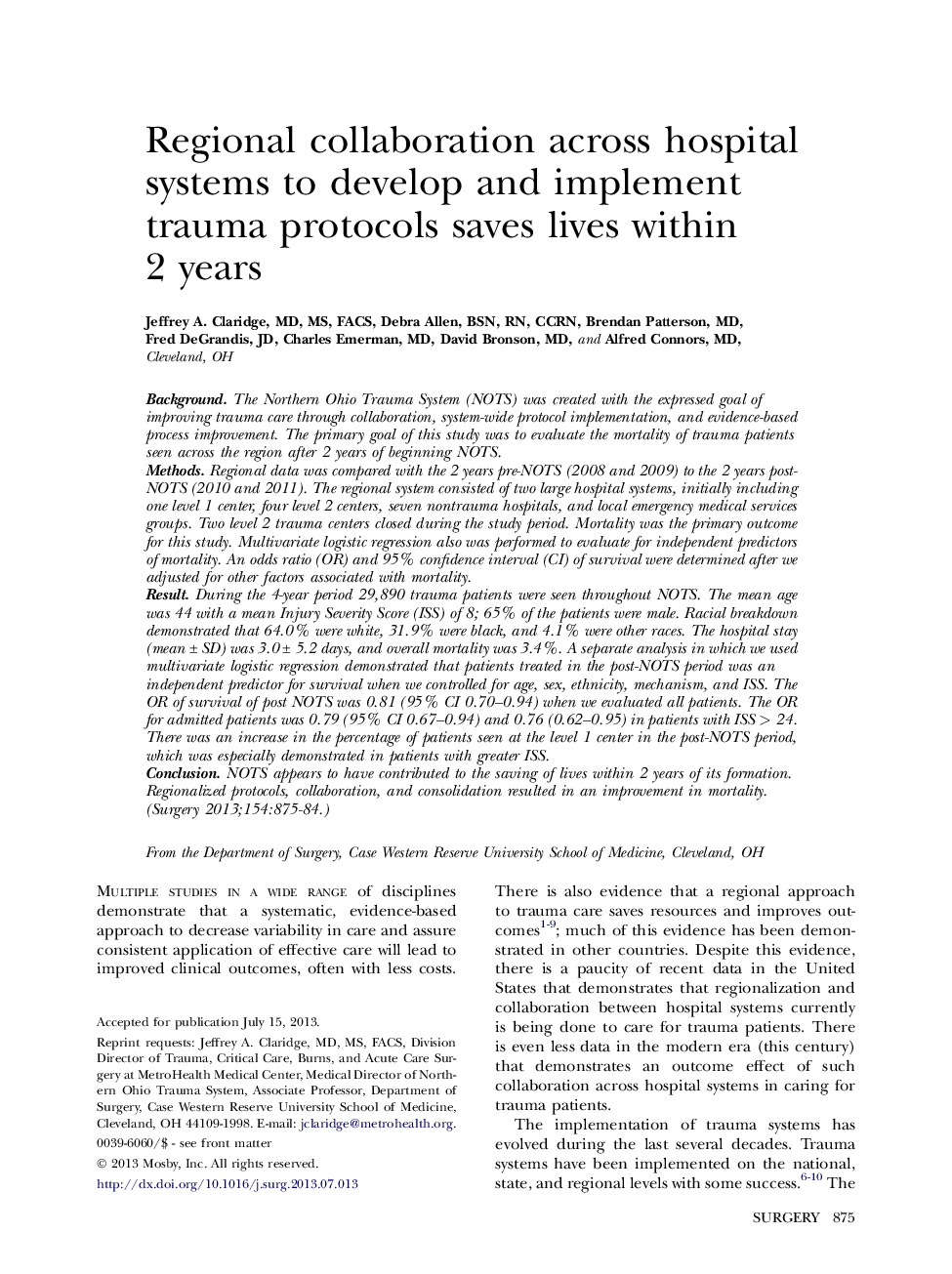| Article ID | Journal | Published Year | Pages | File Type |
|---|---|---|---|---|
| 4307560 | Surgery | 2013 | 10 Pages |
BackgroundThe Northern Ohio Trauma System (NOTS) was created with the expressed goal of improving trauma care through collaboration, system-wide protocol implementation, and evidence-based process improvement. The primary goal of this study was to evaluate the mortality of trauma patients seen across the region after 2 years of beginning NOTS.MethodsRegional data was compared with the 2 years pre-NOTS (2008 and 2009) to the 2 years post-NOTS (2010 and 2011). The regional system consisted of two large hospital systems, initially including one level 1 center, four level 2 centers, seven nontrauma hospitals, and local emergency medical services groups. Two level 2 trauma centers closed during the study period. Mortality was the primary outcome for this study. Multivariate logistic regression also was performed to evaluate for independent predictors of mortality. An odds ratio (OR) and 95% confidence interval (CI) of survival were determined after we adjusted for other factors associated with mortality.ResultDuring the 4-year period 29,890 trauma patients were seen throughout NOTS. The mean age was 44 with a mean Injury Severity Score (ISS) of 8; 65% of the patients were male. Racial breakdown demonstrated that 64.0% were white, 31.9% were black, and 4.1% were other races. The hospital stay (mean ± SD) was 3.0 ± 5.2 days, and overall mortality was 3.4%. A separate analysis in which we used multivariate logistic regression demonstrated that patients treated in the post-NOTS period was an independent predictor for survival when we controlled for age, sex, ethnicity, mechanism, and ISS. The OR of survival of post NOTS was 0.81 (95% CI 0.70–0.94) when we evaluated all patients. The OR for admitted patients was 0.79 (95% CI 0.67–0.94) and 0.76 (0.62–0.95) in patients with ISS > 24. There was an increase in the percentage of patients seen at the level 1 center in the post-NOTS period, which was especially demonstrated in patients with greater ISS.ConclusionNOTS appears to have contributed to the saving of lives within 2 years of its formation. Regionalized protocols, collaboration, and consolidation resulted in an improvement in mortality.
